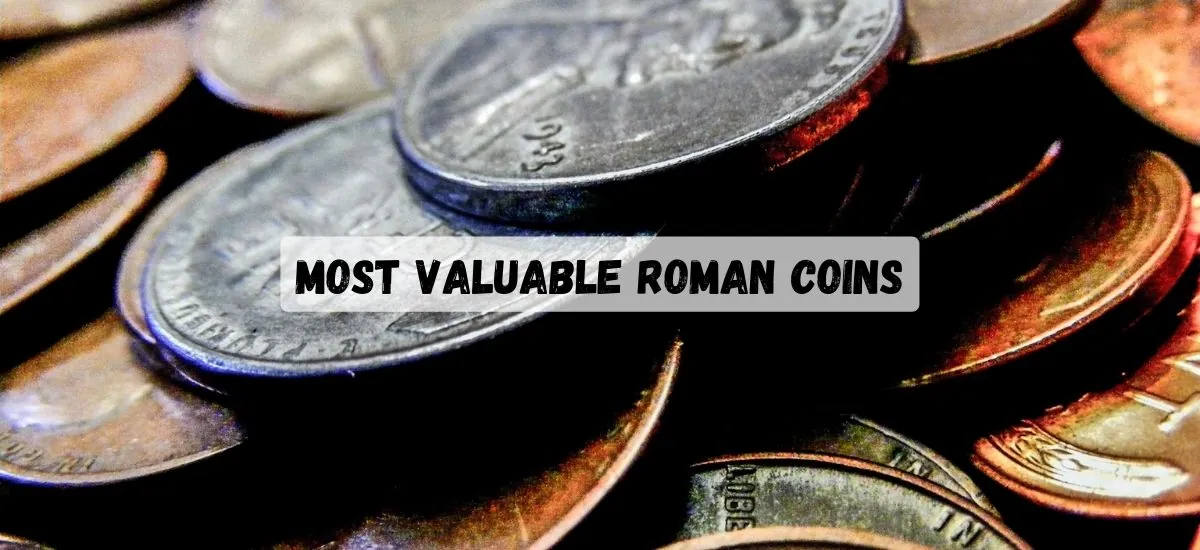As a person who shares a deep love for world history, I tend to have a strong attraction towards historical items, including collectibles like ancient coins. While studying them, I got enticed towards the ancient Roman coins, specifically because of their designs and importance.
Ancient Roman coins like the Brutus Eid Mar Denarius, the Dekadrachm of Syracuse, the Naxos Tetradrachm, and the Gold Stater Of Croesus – are not only some of the Most Valuable Roman Coins ever mined, but also a great window into the history of Roman and Romanian culture, as the majority of them were utilized by regular people, but some surpassed daily life for becoming enduring pieces of history.
In this article, I have given a list of the 10 Most Valuable Roman Coins in the world. If you are a dedicated numismatic enthusiast or a history buff, you must keep reading to get some valuable information about the history of the ancient coins of the Roman Empire.
You May Also Like: A list of the most valuable Mexican coins
How Can You Identify Roman Coins?
Below, I have mentioned a few ways through which you can identify a Roman coin very easily.
- One of the best ways to recognize authentic roman coins is to take opinions from a numismatic specialist.
- There are some common elements existing in the coins made of the roman period as well as geography, and those can help you in quickly identifying whether or not you’re in the presence of a Roman coin.
- The majority of Roman coins have the bust of the emperor who ruled during that time of the production of the coin. Hence, being able to identify who is depicted on it, will make it possible to locate the time period when the coin at consideration was put into circulation.
- Another crucial element present in the Roman coins is the legends that are written in Latin. Various phrases are present either on the adverb or reverse which will allow one to identify the coin in consideration.
- In many roman coins, an ‘SC’ inscription can be noticed, which is an acronym representing the words ‘Senatus Consulto’. Coins that have this inscription mean that they have the support of the Roman Senate.
Also note that though some pieces may not acquire these initials, they are still authentic.
- One more way to identify a Roman coin is to compare it with a trustable catalog online. Or, you can always consult with a specialist who can certify the authenticity of the coin.
What Is The Relation Of Roman Coins From History?
As with every other ancient coin, Roman coins are a significant material source for historians. As a medium of exchange, coins are very crucial for the economy and trade.
Roman coins are an excellent source for gaining knowledge about the administrative history of Rome. Moreover, the content of the Roman coins provides a comprehensive idea regarding the economic condition of that time.
Like every other society, Roman Coinage represented a guaranteed and extensively recognized value that allowed an easy exchange of value which sequentially uplifted both commerce, as well as technology development as people from each class could work to possess coins to spend on each manner of services and goods.
The List of 10 Most Valuable Roman Coins of All Time
1. The Brutus Eid Mar Denarius
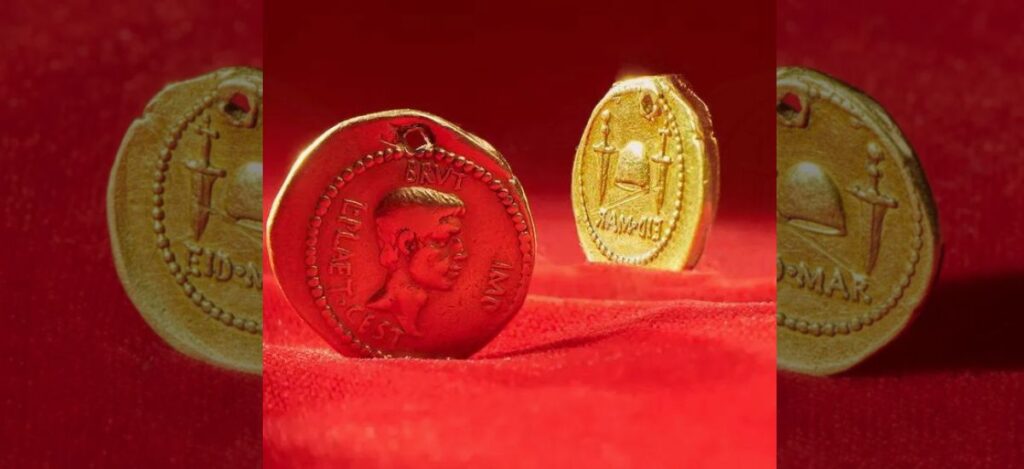
- Year of Origin – 42 BC
This coin has a portrait of Brutus on the obverse and on the reverse side, it features a pileus flanked by two daggers.
In 42 BC, this coin was commissioned by Brutus, just a few months before he died by committing suicide. Later, Mark Antony and Octavian recalled these coins for melting down to reuse. Hence, there are less than a hundred coins that are known to have survived and made this particular coin one of the most valuable and rare coins.
2. The Athens Decadrachm
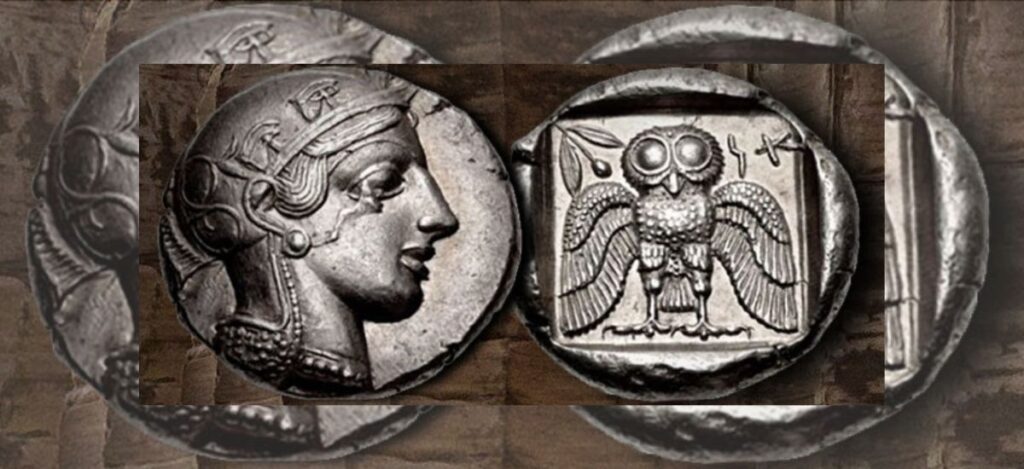
- Year of Origin – 460-430 BC
The Athens Decadrachm coins were minted against the setting of war.
Athens joined the alliance of free Greeks and aimed to free all the cities under Persian rule. After achieving victory against the Persians, between 469 and 465 BC, this coin was struck in commemoration.
The obverse of the coin features Athena, Athens’ city god, and the reverse features an owl, which is the symbol of Athena.
3. The Dekadrachm Of Syracuse
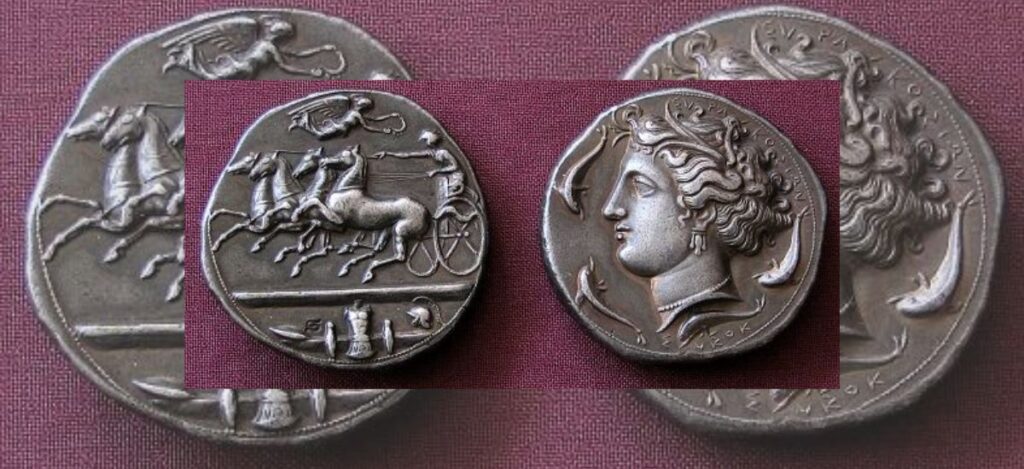
- Year of Origin – 400-390 BC
This coin is considered to be one of the finest examples of numismatic art from antiquity.
Kimon, the most popular engraver of Syracuse, was attributed to this ancient coin. This coin depicts Arethusa, the water nymph, encompassed by four dolphins on the obverse, and a four-horse chariot which represents the four tyrants of Syracuse, on the reverse. Also, Nike is seen to be flying on top of the chariot.
4. The Akragas Decadrachm
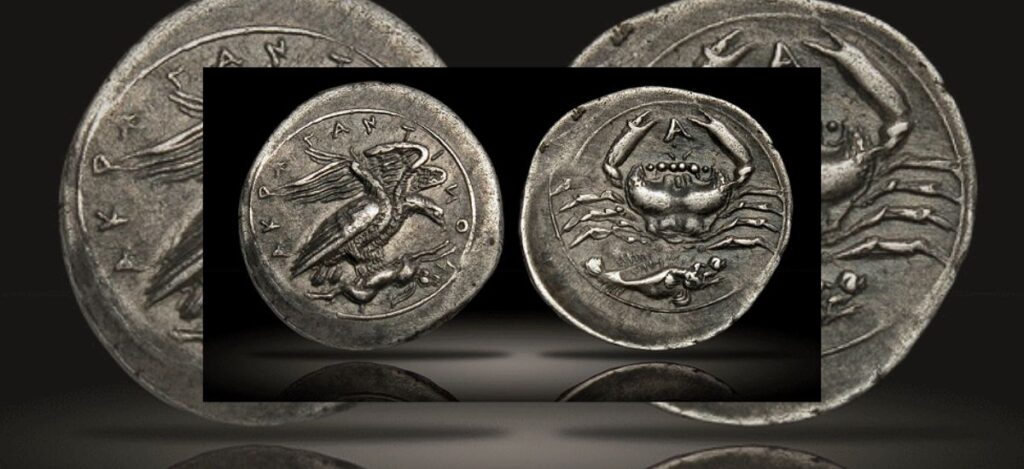
- Year of Origin – 411 BC
This is one of the most valuable and rarest ancient coins of all time. Less than ten of these coins are known to be still in existence. The Akragas Decadrachm is among the greatest coins which were introduced in the 5th century in Sicily. These cities were one of the very first who started to mint silver coins.
The obverse of this coin features Helio, the sun god, riding his chariot. The sky has been pictured by an eagle and the sea has been pictured by a crab. The coin’s reverse represents two eagles standing on top of a hare’s body.
5. The Naxos Tetradrachm

- Year of Origin – 460 BC
Among all the coins issued in the 5th century BC, the Naxos Tetradrachm is considered to be the greatest. This coin is known for surpassing in the execution of the fine details and became one of the greatest examples of ancient greek coin making.
It was produced for commemorating the refounding of Naxos in 461 BC.
The front of the Naxos Tetradrachm depicts the god Dionysus and on the reverse, it features the satyr Silenus in a sitting position. The picture of Dionysus has an excellent level of detailing on it, which makes this coin stand out among all the ancient coins.
6. The Gold Stater of Croesus
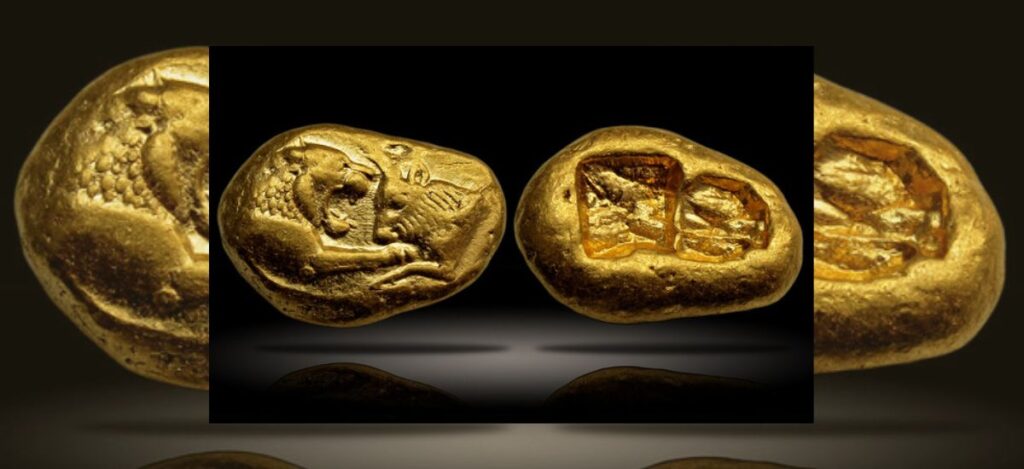
- Year of Origin – 550 BC
This coin was made from a naturally occurring alloy labeled Electrum, which is a mixture of silver and gold. As this alloy was proven to be a challenging material for producing coins.
Because of the naturally occurring mix of silver and gold, the proper amount of these materials in every coin differs, which makes it difficult to estimate the exact value of these coins.
To solve this issue, King Croesus produced coins in pure silver and pure gold. The Gold Stater is the very first pure gold coin ever issued, which makes it one of the most valuable coins in the world.
7. The Titus Colosseum Sestertius
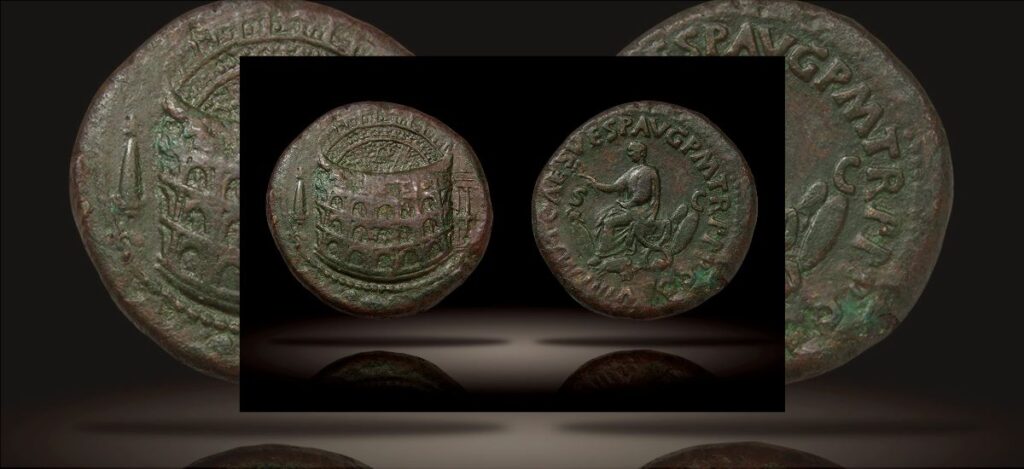
- Year of Origin – 81-82 AD
Titus issued this particular coin for commemorating the dedication ceremonies after the completion of the Colosseum in 80 AD.
This coin is one of the earliest representations of the Colosseum. The Titus Colosseum Sestertius depicts a bust of Titus on the obverse and a picture of the Colosseum on the reverse. There are only ten of these coins that are known to be still in existence.
8. The Portrait Denarius of Cleopatra And Mark Antony
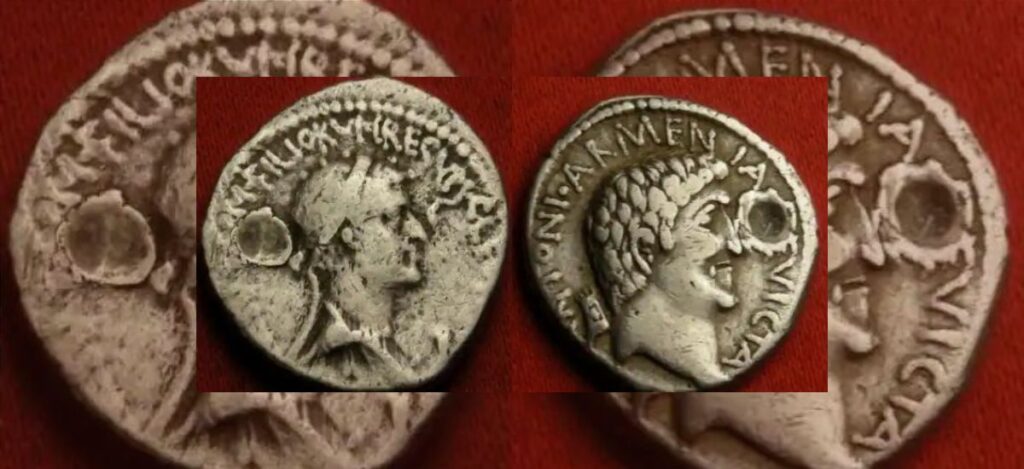
- Year of Origin – 32 BC
This coin features one of the most well-known couples in world history – Cleopatra and Mark Antony. Cleopatra was the very last Ptolemaic ruler of Egypt and also one of the central figures in the civil war between Mark Antony, Julius Caesar, and Octavian.
She joined Caesar until his assassination, and afterward, associated with Mark Antony against Octavian. After being defeated by Octavian, both Cleopatra and Antony committed suicide.
9. The Netro Port Of Ostia Sestertius

- Year of Origin – 64 AD
This coin depicts the bust of Nero on the obverse and on the reverse it features an overview of a harbor along with a picture of Tiber, the river god. Fine detailing can be noticed on the ships.
10. Portrait Denarius Of Julius Caesar
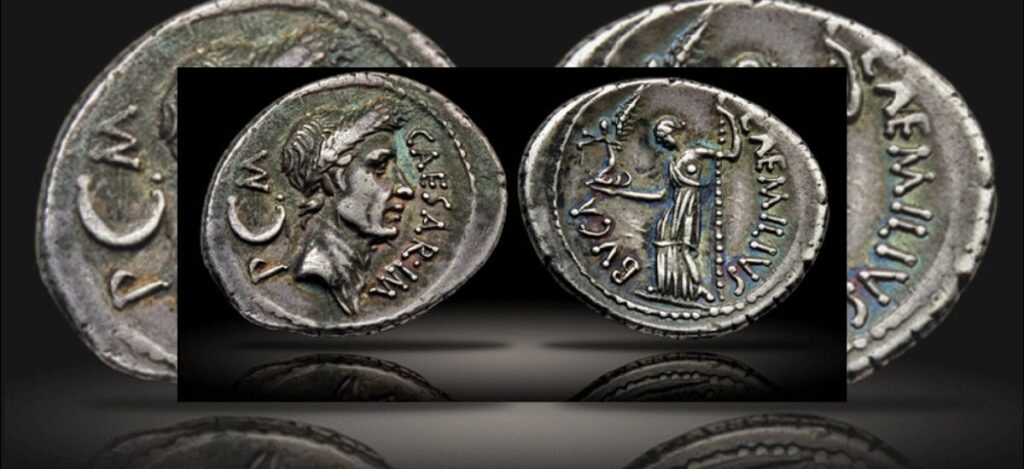
- Year of Origin – 44 BC
This coin is valuable as it features the portrait of Julius Caesar. After this coin, there haven’t been any coins that acquired the picture of a ruler in the Roman Republic.
Frequently Asked Questions
What is the rarest Roman coin?
Although there are several roman coins that are quite rare, among them all, the rarest roman coin is the Aureo Medallion of Messenzio, which is known in only two pieces.
One of the two pieces was sold on 5th April 2011 at an auction. For how much? The piece was sold for a whopping amount of 1,407, 550.
Also Read: Top 20 Most Valuable Beanie Babies
